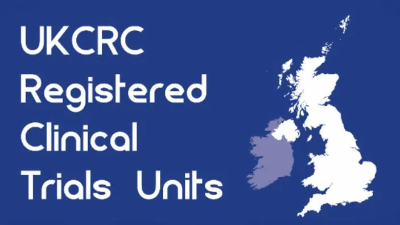- Cancer
- Trials open to recruitment
UK P3BEP
Accelerated vs. Standard BEP Chemotherapy for Patients With Intermediate and Poor-risk Metastatic Germ Cell Tumours
Research summary
Germ cell tumours of the testis are the most common malignancy affecting adolescent and young adult males in Australia and many other Western countries, with a disproportionally high amount of healthy life lost each year due to the early age at onset. Germ cell tumours comprise 98% of testicular cancers and are responsible for almost all of the mortality. Germ cell tumours also arise in the ovary, but are considerably rarer than the male equivalents - accounting for 1% to 2% of ovarian neoplasms, but 70% of ovarian neoplasms in females aged between 10 and 30 years. Germ cell tumours also rarely arise in the mediastinum, retroperitoneum, ovary and brain. Post-pubertal germ cell tumours in children share similar genetic and histologic characteristics to adult germ cell tumours, but differ from pre-pubertal germ cell tumours. They represent 14% of all cancers in older adolescents.
Metastatic extra-cranial germ cell tumours are typically treated with chemotherapy, surgical resection of the primary site either before or after chemotherapy, and surgical resection of any residual metastatic disease remaining after chemotherapy. Outcomes are excellent for most male adult patients, but a third with metastatic disease and poor prognostic features still relapse and die despite best available treatment. Female germ cell tumour patients achieve similar responses to first-line chemotherapy to their male counterparts, but females have inferior outcomes to salvage treatment. Females are often not included in trials due to the rarity of disease, so their treatment has been adapted from male germ cell tumours and other ovarian malignancies. Management algorithms for paediatric germ cell tumours have also been adapted from adult regimens.
Treatment for patients with metastatic germ cell tumours and intermediate or poor prognosis needs improvement. The proportion of patients with metastatic GCTs who could be cured jumped dramatically in the late 1970s and early 1980s with the introduction of cisplatin-based chemotherapy. BEP was introduced in the late 1980s and has remained the standard first-line chemotherapy for over 25 years. Current internationally-recognised prognostic criteria classify male adult patients into 3 risk groups prior to starting chemotherapy – good, intermediate and poor. Cure rates are over 90% for male adult patients with good-risk disease, but about 85% for those with intermediate-risk disease (e.g. high tumour markers), and about 70% for those poor-risk disease (e.g. liver, bone or brain metastases). The five-year survival rate for stage IV (FIGO classification) female adult ovarian germ cell tumours is 71%, similar to poor-risk disease in adult males. A risk stratification for prognostication of paediatric extracranial germ cell tumours has been developed by the Malignant Germ Cell International Collaborative (MaGIC). The long-term disease-free survival for patients age ≥ 11 years with either stage III/IV extragonadal tumours or stage IV ovarian tumours was < 70%, also similar to poor-risk disease in adult males. Improving the results of first-line chemotherapy would reduce the need for toxic, costly salvage treatment with high dose chemotherapy, as well as reducing death rates, and returning adolescents and young adults to long, healthy and productive lives.
Previous strategies to improve first-line chemotherapy tested in Phase II and III clinical trials have included the use of alternative or additional chemotherapy agents, more complex multi-drug regimens, and very high dose chemotherapy with stem cell support. Unfortunately, none of these strategies improved cure rates, and all were more toxic than BEP. New strategies are needed for patients with intermediate- and poor-risk disease. We propose an accelerated regimen of BEP based on theoretical rationale, proof of efficacy of accelerated therapy in other tumour types, and evidence of feasibility and safety from an Australian single-arm phase I/II trial and a similar trial conducted in the UK.
This is an open-label, randomised, stratified 2-arm multicentre phase 3 clinical trial undertaken in two stages. P3BEP is an international trial conducted collaboratively between the Australian and New Zealand Urogenital and Prostate group (ANZUP), who also plan a number of sites in the USA. Approximately 170 patients are expected to be recruited from UK participating sites. The duration of treatment is expected to be 12 weeks (4 cycles of standard or accelerated BEP therapy). Patients will then enter the formal follow up phase. This phase will begin at 9 months post randomisation and continue until 60 months post randomisation. Patients will be followed up annually until disease progression. Following disease progression patients will be followed up every 6 months for patient survival status, until trial close.
Main inclusion criteria
Patients will be eligible for inclusion into this study if they meet all of the following criteria:
- Able and willing to provide signed, written informed consent/assent
- Male or female
- Aged between 11 and 45 years inclusive on the date of consent
- Histologically or cytologically confirmed germ cell tumour (non-seminoma or seminoma); or exceptionally raised tumour markers (AFP > = 1000ng/mL and/or HCG > = 5000IU/L) without histologic or cytologic confirmation in the rare case where pattern of metastases is consistent with GCT, high tumour burden, and a need to start therapy urgently
- Primary arising in the testis, ovary, retro-peritoneum or mediastinum
- Metastatic disease or non-testicular primary
- Intermediate or poor prognosis as defined by IGCCC classification3 (modified with different LDH criteria for intermediate risk non-seminoma and inclusion of ovarian primaries).
- Adequate bone marrow function with ANC > = 1.0 x 109/L
- Adequate liver function where bilirubin must be < = 1.5 x ULN, - except if the elevations are due to hepatic metastases, in which case ALT and AST must be < = 5 x ULN - except participants with Gilbert’s Syndrome where bilirubin must be < = 2.0 x ULN; ALT and AST must be < = 2.5 x ULN
- Adequate renal function with estimated creatinine clearance of > = 60 ml/min according to the Cockcroft-Gault formula, unless calculated to be < 60 ml/min or borderline, in the opinion of the investigator, in which case GFR should be formally measured, e.g. with EDTA scan
- ECOG Performance Status of 0, 1, 2 or 3
- Study treatment both planned and able to start within 14 days of randomisation
- Willing and able to comply with all study requirements, including treatment, timing and nature of required assessments.
Main exclusion criteria
- Other primary malignancy (EXCEPT adequately treated non-melanomatous carcinoma of the skin, germ cell tumour, or other malignancy treated at least 5 years previously with no evidence of recurrence)
- Previous chemotherapy or radiotherapy, except:
- Pure seminoma relapsing after adjuvant radiotherapy of adjuvant chemotherapy with 1-2 doses of single agent carboplatin
- Non-seminoma and poor prognosis by IGCCC criteria in the rare case where low-dose induction chemotherapy is given prior to registration because patient is not fit enough to receive protocol chemotherapy (e.g. organ failure, vena cava obstruction, overwhelming burden of disease). Recommended regimens include cisplatin 20 mg/m2 days 1-2 and etoposide 100 mg/m2 days 1-2; carboplatin AUC 3 days 1-2 and etoposide 100 mg/m2 days 1-2; or baby-BOP. Please contact the CI prior to randomisation to discuss if the planned induction regimen is not specifically one of the above. Patients must meet all other inclusion and exclusion criteria at the time of registration
- Patients who need to start therapy urgently prior to completing trial-specific baseline investigations may commence trial chemotherapy prior to registration and randomisation. Such patients must be discussed with the coordinating centre prior to registration, and must be registered within 10 days of commencing trial chemotherapy
- Significant cardiac disease resulting in inability to tolerate IV fluid hydration for cisplatin
- Significant co-morbid respiratory disease that contraindicates the use of bleomycin
- Peripheral neuropathy ≥ grade 2 or clinically significant sensorineural hearing loss or tinnitus
- Concurrent illness, including inflammation of the urinary bladder (cystitis), severe infection that may jeopardize the ability of the patient to undergo the procedures outlined in this protocol with reasonable safety
- Sexually active patients of reproductive potential are not eligible unless they have agreed to use an effective contraceptive method for the duration of their trial participation and continue for 12 months from last dose. Women of childbearing potential must have a negative pregnancy test done within 7 days prior to randomisation
- Women who are breast-feeding
- Known allergy or hypersensitivity to any of the trial drugs
- Received live vaccine within 30 days of randomisation
- Presence of any psychological, familial, sociological or geographical condition that in the opinion of the investigator would hamper compliance with the trial protocol and follow-up schedule, including alcohol dependence or drug abuse.
Funders and sponsors
Funders: Cancer Research UK
Sponsors: Cambridge University Hospitals NHS Foundation Trust






